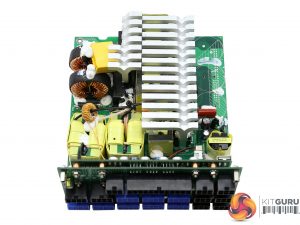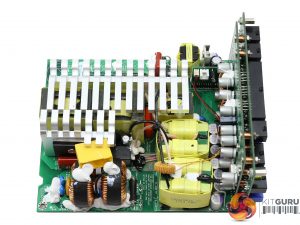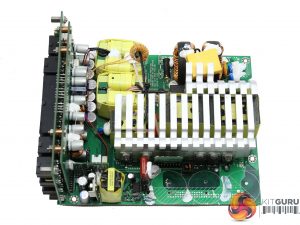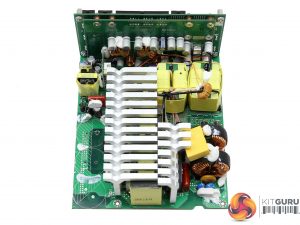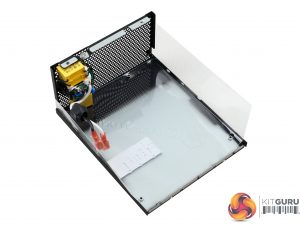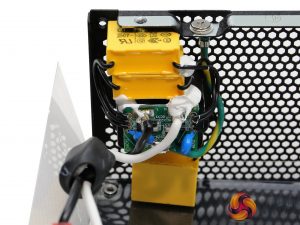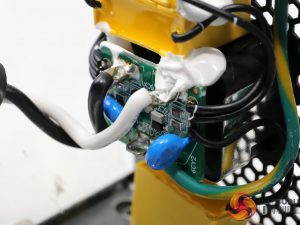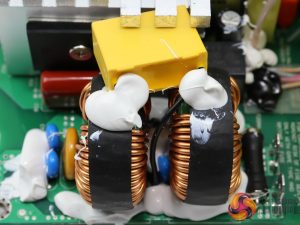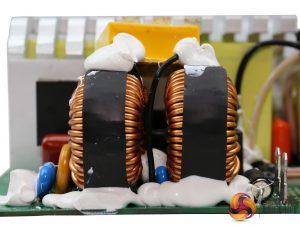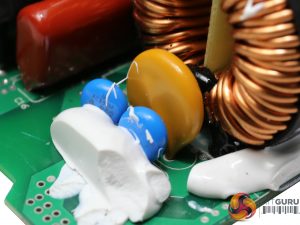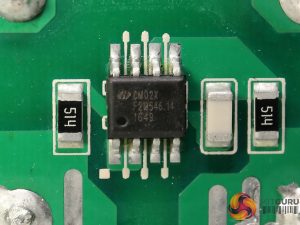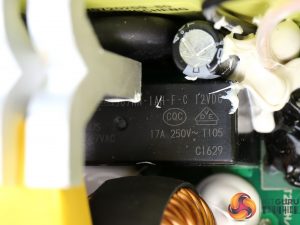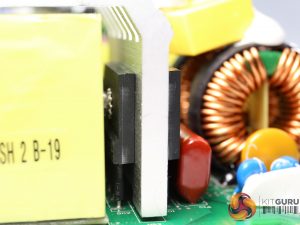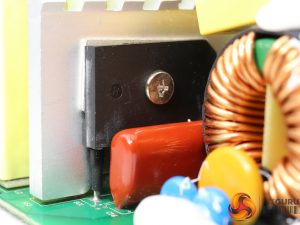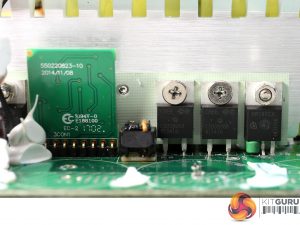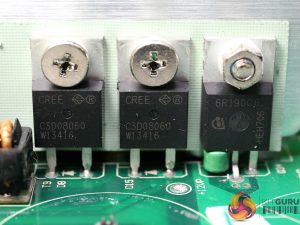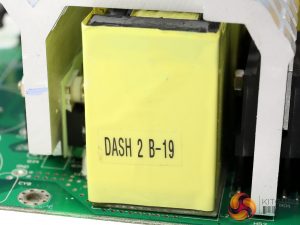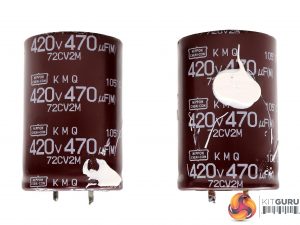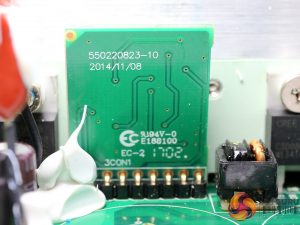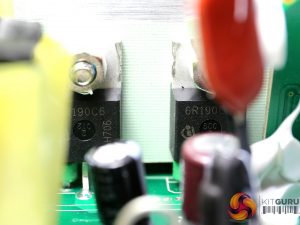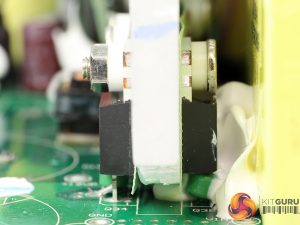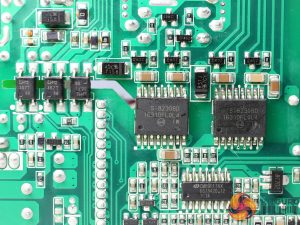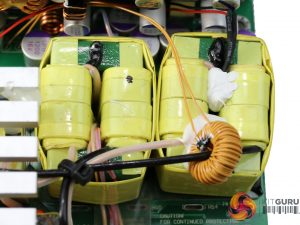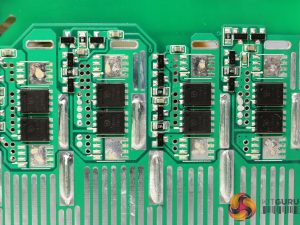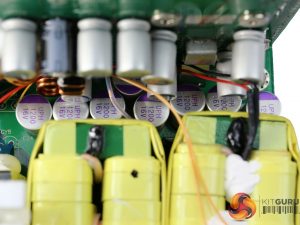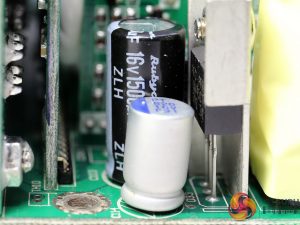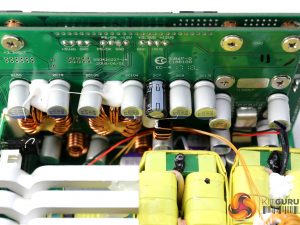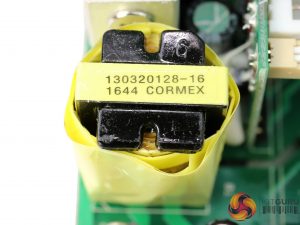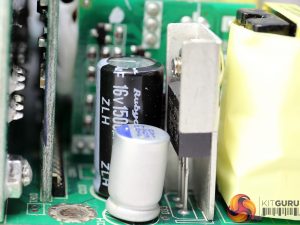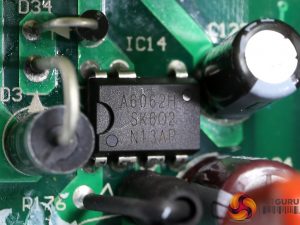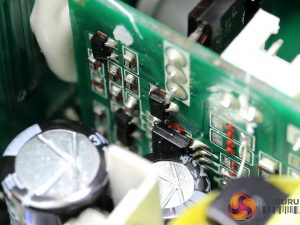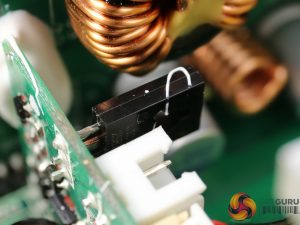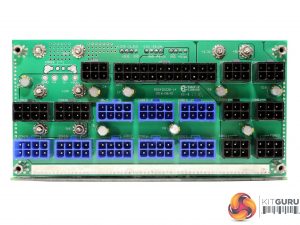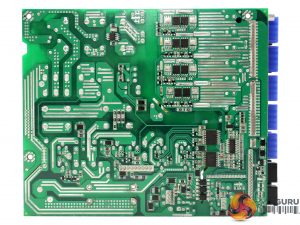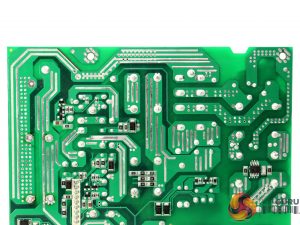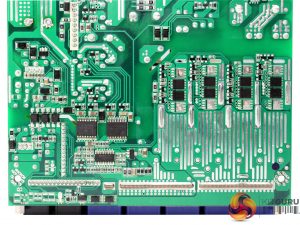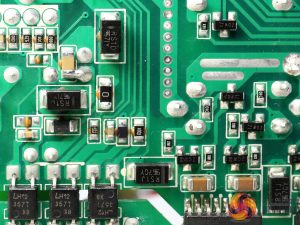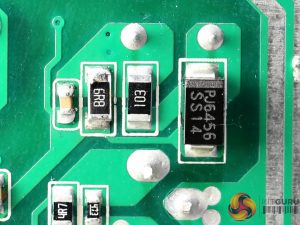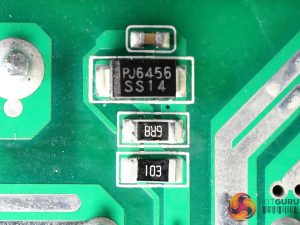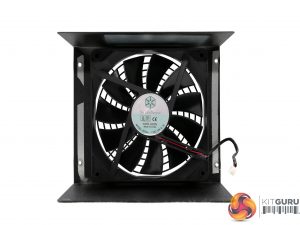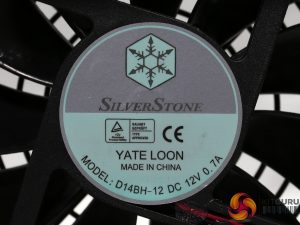|
General Data |
|
|
Manufacturer (OEM) |
Enhance Electronics |
|
Primary Side |
|
|
Transient Filter |
6x Y caps, 4x X caps, 2x CM chokes, 1x MOV, 1x CM02X |
|
Inrush Protection |
NTC Thermistor & Relay |
|
Bridge Rectifier(s) |
2x |
|
APFC MOSFETS |
2x Infineon IPP60R190C6 (650V, 12.8A @ 100°C, 0.19Ohm) |
|
APFC Boost Diode |
2x CREE C3D08060A (600V, 8A @ 152°C) |
|
Hold-up Cap(s) |
2x Nippon Chemi-Con (420V, 470uF, 2000h @ 105°C, KMQ) |
|
Main Switchers |
4x Infineon IPP60R190C6 (650V, 12.8A @ 100°C, 0.19Ohm) |
|
Driver ICs |
2x Silicon Labs Si8230BD |
|
APFC Controller |
Champion CM6502S & CM03X Green PFC controller |
|
LLC Resonant Controller |
Champion CM6901T6X |
|
Topology |
Primary side: Full-Bridge & LLC Resonant Controller |
|
Secondary Side |
|
|
+12V MOSFETS |
8x Infineon BSC014N04LS (40V, 100A @ 100°C, 1.4mOhm) |
|
5V & 3.3V |
2x DC-DC Converters |
|
Filtering Capacitors |
Electrolytics: 5x Rubycon (6-10,000h @ 105°C, ZLH), 8x Sun'con (105°C), 1x Nippon Chemi-Con (4000-1000h @105°C, KY) |
|
Supervisor IC |
SITI PS223 (OVP, UVP, OCP, SCP, OTP) |
|
Fan Model |
Yate Loon D14BH (140mm, 12V, 0.7A, 2800 RPM, 140 CFM, 48.5 dBA, Double Ball Bearing) |
|
5VSB Circuit |
|
|
Rectifier |
1x PFR10V45CT SBR (45V, 10A) |
|
Standby PWM Controller |
Sanken STR-A6062H |
This platform is provided by Enhance Electronics and the build quality looks high, components from well-known brands have been used and the design is modern. In the primary side we meet a full-bridge topology and an LLC resonant converter. This is the typical combination for both high output power and increased efficiency. The secondary side uses a synchronous design where a number of FETs regulate the +12V rail and two DC-DC converters generate the minor rails.
The EMI filter is complete with six Y caps, four X ones, two CM chokes, a CM02x discharge IC and a MOV. We couldn't ask for more components in this stage, however the performance still isn't optimal since we measured an EMI spike at a higher frequency. Usually there is increased EMI at lower frequencies, but this is not the case here.
There is a NTC thermistor for protection against large inrush currents. It is supported by a bypass relay.
The pair of powerful bridge rectifiers can handle up to 50 Amperes of current.
Two Infineon IPP60R190C6 FETs chop the fully rectified signal coming out of the bridge rectifiers and two CREE C3D08060A boost diodes provide protection against large freewheeling currents. The bulk caps are two Nippon Chemi-Con KMQs with 470uF each or 940uF, which clearly is not enough to provide a long enough hold-up time.
The APFC controller, a Champion CM6502S, along with a CM03X Green PFC controller are installed onto this small daughter-board.
The main switching FETs are four Infineon IPP60R190C6, which are configured into a full-bridge topology. Their driver ICs are two Silicon Labs Si8230BD, soldered on the back of the main PCB. Finally, an LLC resonant converter is also used, to restrict the switching losses.
Two parallel transformers isolate the primary and secondary sides.
In the secondary side, eight Infineon BSC014N04LS FETs regulate the +12V rail. Those FETs are installed on the solder side of the PCB and are mostly cooled by the chassis, with a thermal pad providing the contact between the two. As you can see in the photo above, there is room for eight more FETs, space which is utilised in the 1500W Strider Titanium model.
Mostly polymer caps handle the ripple filtering on the secondary side, with a few electrolytic ones providing the necessary capacity and the ESR as well, which helps with avoiding unwanted oscillations.
The voltage regulation modules that handle the minor rails, are installed onto a large PCB right behind the modular board.
The 5VSB circuit is rectified by a PFR10V45CT SBR and the standby PWM controller is a Sanken STR-A6062H.
Above we can see the fan speed control board.
At the front of the modular board, several Sun'con electrolytic caps are installed.
The soldering quality is very good – Enhance has a solid reputation in this area.
The cooling fan is by Yate Loon and its model number is D14BH. It uses a double ball bearing, so it will easily cope with tough conditions.
 KitGuru KitGuru.net – Tech News | Hardware News | Hardware Reviews | IOS | Mobile | Gaming | Graphics Cards
KitGuru KitGuru.net – Tech News | Hardware News | Hardware Reviews | IOS | Mobile | Gaming | Graphics Cards


